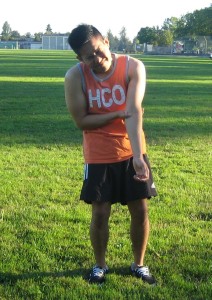Complex regional pain syndrome is an uncommon form of chronic pain condition that causes intense pain in the arms, hands, legs or feet. It happens after an injury that is caused either to the nerve or to tissues in the affected area. Rest and time can only make it worse.
Symptoms of complex regional pain syndrome or CRPS

- An intense burning pain
- Changes in skin temperature, color and texture
- There is swelling and stiffness in the affected joints and difficulty in moving the affected areas
- Extreme sensitivity of the skin
- There are changes in hair and growth of the nails
- Muscle spasm, weakness and loss or atrophy
The affected part of the body can become cold and pale along with changes in the skin and nails. The individual will also experience spasms and tightening and when these changes happen, the condition is sometimes permanent. Complex regional pain syndrome can spread from its source to other parts of the body and the pain can be worse due to emotional stress. In some people, the symptoms of CRPS just disappear on their own, but sometimes it persists for months to years.
Causes of complex regional pain syndrome
The syndrome typically occurs in two forms. They have similar symptoms but with distinct causes:
Type 1 – also called as reflex sympathetic dystrophy and develops after a health condition or damage that did not cause injury to the nerves within the affected limb.
Type 2 – also referred to as causalgia and this type causes nerve injury
Complex regional pain syndrome happens after a forceful trauma to an arm or leg like a fracture, crush injury and amputation. Surgeries, heart attacks, infections and even sprained ankles can cause complex regional pain syndrome.
Some complications that complex regional pain syndrome can cause include atrophy which is tissue wasting, where the affected person avoids moving affected arm or leg because of pain or there is difficulty in moving the affected area due to stiffness and the bone will weaken and deteriorate. Another is contracture which is muscle tightening. It is the tightening of the muscles in which the hands and fingers or the foot and toes contracts to a fixed position.
Treatment and home remedies
- Take over-the-counter pain medications like aspirin, ibuprofen to minimize pain and inflammation.
- Apply a cold compress in order to relieve swelling and sweating and if the affected area is cool, apply hot compress in order to give relief. If you want to learn how to utilize a cold compress, click here to learn more.
- Apply topical analgesic in order to reduce hypersensitivity like capsaicin cream or lidocaine patches.
- Perform some gentle and guided exercises for the affected limb in order to minimize pain and improve the range of motion and strength.
- Apply transcutaneous electrical nerve stimulation or (TENS) in order to minimize severe pain.
- Spinal cord stimulation in which tiny electrodes are inserted along the spinal cord and a small electrical current is delivered to the spinal cord for pain relief.
